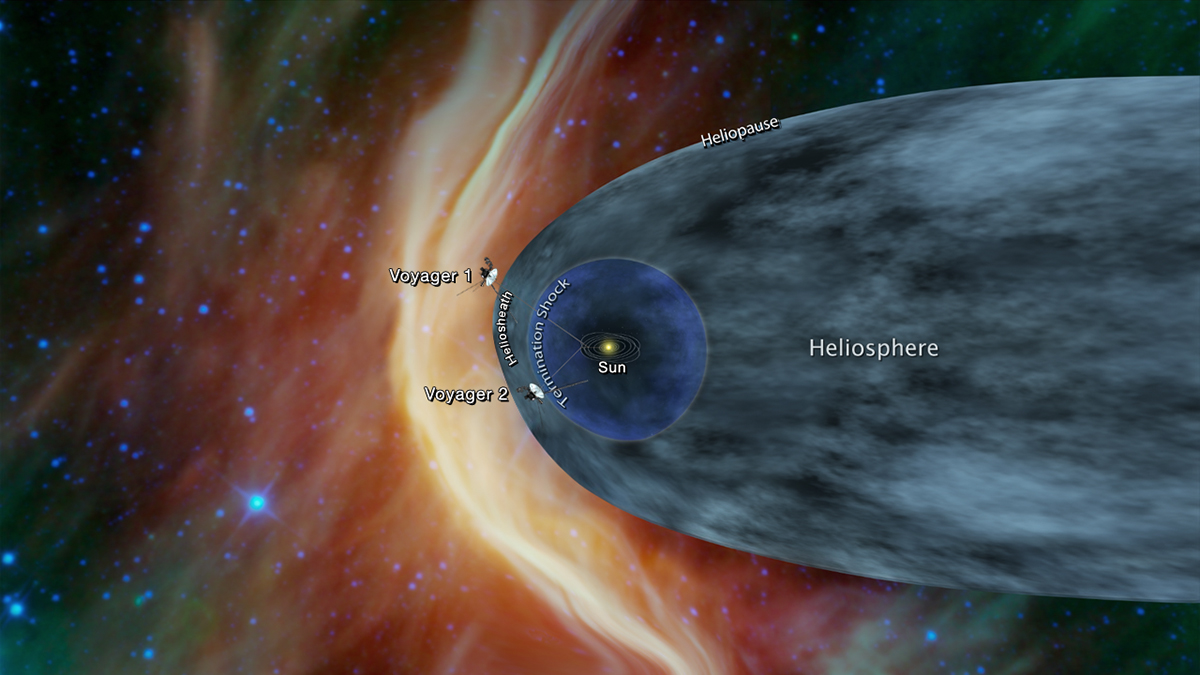At https://www.jpl.nasa.gov/news/news.php?feature=7252 … the Voyager 2 spacecraft probe has detected an increase in cosmic rays that originate outside our solar system – which suggests it is fast approaching interstellar space. Since 2007 it has been travelling through the outer layers of the heliosphere. Voyager 1 is already in interstellar space it is thought. It is unclear if the general lack of solar activity has caused the heliosheaf to retract (as we in between two solar cycles). If so that might mean that during solar maximum (the middle part of the 11 year solar cycle) the heliosheaf may expand – somewhat like the magnetosphere around the earth (pummelled by the solar wind).
 … see also https://www.nasa.gov/voyager … and https://voyager.jpl.nasa.gov/ …
… see also https://www.nasa.gov/voyager … and https://voyager.jpl.nasa.gov/ …
Meanwhile, at https://phys.org/print457863964.html … an X-ray survey supports the standard comsological model we are told. ESAs XMM Neutron X-Ray observatory has produced a lot of data from around the universe. Scientists have mapped galaxy clusters in the distant universe in detail and the results, they assure us, are compatible with expectations from the currently consensus cosmological model. The results are published in the journal Astronomy and Physics this month.
However, later they add they did not find as many galaxy clumps as predicted by the Planck cosmological model although they did obtain a distribution of clusters that is compatible with the model (which uses Einstein's comological constant as an explanation for the accelerated expansion of the universe). For more info see www.aanda.org/component/?/task=topic&id=927
However, when we got to https://phys.org/print457944514.html … we are told 'observation challenges cosmological theories' – since Big Bang fewer galaxy clusters have formed than were actually expected to form. Do we need to abandon some modern cosmological theories and models? The Planck satellites were launched to measure the cosmic background radiation. This radiation, to some extent, is afterglow from Big Bang (it is thought), and should contain crucial information on matter distribution in the early universe. However, Planck data show that not enough galaxy clusters have fomred to comply with the model. In other words, the clusters formed too slowly in contradiction to the model and this contradicts Big Bang (to a certain extent). One has to ask how reliable are the models as they are based on the thin hope of cosmic background radiation to provide a satisfying result. More imprtantly, we have two press releases which appear to contradict each other concerning the actual findings. One has to read the full article to get a proper handle on the subject.
